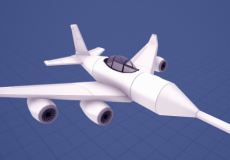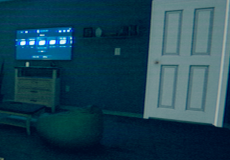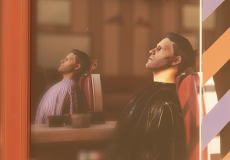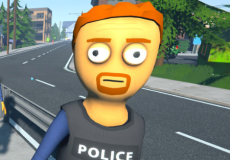

Ultrakill
Ultrakill is a first-person shooter that combines movement, precision, and rhythm-based combat. The player controls a machine driven by pure instinct for destruction, navigating through levels filled with enemies and environmental hazards. The gameplay emphasizes continuous motion and aggressive tactics — standing still often leads to failure. Every encounter is built around maintaining momentum, chaining attacks, and recovering health through close-quarters engagement. The system encourages mastery of timing and efficiency rather than simple reaction speed.
Similiar games
Ultrakill is a first-person shooter that combines movement, precision, and rhythm-based combat. The player controls a machine driven by pure instinct for destruction, navigating through levels filled with enemies and environmental hazards. The gameplay emphasizes continuous motion and aggressive tactics — standing still often leads to failure. Every encounter is built around maintaining momentum, chaining attacks, and recovering health through close-quarters engagement. The system encourages mastery of timing and efficiency rather than simple reaction speed.
Structure and Core Mechanics
Each stage in Ultrakill is designed as a self-contained arena that rewards exploration and combat performance. Movement forms the foundation of play: sliding, jumping, and dashing allow the player to control position and avoid damage. Enemies are varied in behavior, requiring adaptation through weapon choice and timing. Scoring depends on speed, accuracy, and style rather than kill count. The player’s health regenerates through direct combat—damage dealt at close range returns vitality, reinforcing aggressive play. This design turns survival into an ongoing rhythm of attack and recovery.
Key Systems and Features
The main systems in Ultrakill include:
· High-speed movement through dashing, sliding, and wall-jumping
· A style and scoring system that grades combat efficiency
· Weapon variety with alternate fire modes for situational use
· Health restoration through melee or close-range attacks
· Level ranking based on performance metrics such as time and precision
These elements interact to create a fluid loop of constant action. Momentum and awareness replace traditional cover mechanics, pushing the player to stay mobile and adaptive.
Progression and Challenge
Ultrakill progresses through multiple layers inspired by structured trials. Each level introduces new enemy types, environmental hazards, or weapon functions. The difficulty rises through complexity rather than simple resistance—patterns become denser, and room layouts demand more awareness. The ranking system encourages replayability, as players aim to perfect their runs by minimizing downtime and maximizing efficiency. Hidden challenges, secret rooms, and alternate routes provide additional objectives beyond direct combat.
Discuss Ultrakill




















